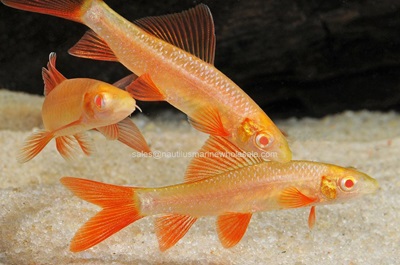
SKU: H786

Freshwater Sharks Care Tips
In Stock
Out of Stock
Temporarily Out of Stock
Discontinued
Special Order
Price:
Product Details
Freshwater Sharks
Why Keep Them? Freshwater sharks are hardy, long lived, and active. They are an interesting fish that has the look and body shape of a shark, while it is not a true "shark".
Tank Size: Depending on the species, freshwater sharks can be kept in a tank ranging between the sizes of 20-120+. There are two species which will be discussed in this handout that require a large aquarium to be housed.
Temperature: 74-80.
Feeding: Feed twice to three times daily. These fish prefer to get their food from the bottom of the tank, so flakes are not advised. A pellet food of any tropical formula is advised. For some shark species, it is important that they get some greens in their diet, so the usage of pellets like
Red Tail Shark (Epalzeorhynchos bicolor) Grows to 5"
These sharks are best kept as singles if it is a tank of 55 gallons or less. If you are going to keep them in groups, it is recommended for a large tank, that has many hiding spaces. These fish can be territorial towards one another, so making sure there is optimal swim space and hiding spaces will lead to more success.
Red Rainbow Shark (Epalzeorhynchos frenatum) Grows to 5"
These sharks are best kept as singles if it a tank of 55 gallons or less. If you are going to keep them in groups, it is recommended for a large tank that has many hiding spaces. These fish can be territorial towards one another, so making sure there is optimal swim space and hiding spaces will lead to more success.
Ghost Shark (Epalzeorhynchos frenatum) Grows to 5"
These sharks are actually a Red Rainbow Shark, but instead of their fins being a red coloration, they are a pale white, referring to their name being "Ghost". These sharks are best kept as singles if it a tank of 55 gallons or less. If you are going to keep them in groups, it is recommended for a large tank that has many hiding spaces. These fish can be territorial towards one another, so making sure there is optimal swim space and hiding spaces will lead to more success.
Roseline Shark/Demasoni Barb (Sahyadria denisonii) Grows to 8"
The Roseline Shark is a beautiful and color species that actually resides in the barbus (barb) genus. This a highly social fish, they need to be kept in groups of a minum of 3. The larger the group the better! Optimal coloration is achieved through keeping them in schools, and by feeding them high protein foods that are aimed towards omnivorous fish. A great combination could be Fluval Bug Bites Tropical Flakes as well as Fluval Bug Bites Spirulina Flakes.
Tri Color/Bala Shark (Balantiocheilos melanopterus) Grows to 12"
This fish is peaceful, shy, and highly social. Make sure you keep a tight cover on the aquarium as they have been known to jump. This fish is a wonderful addition to many types of communities, as long as its done in a large aquarium. As juveniles, a group of Bala sharks can be kept in a minimum tank size of 40 gallons, but at they grow, these fish will need a 120 gallon or higher to give them enough space. Tank mates can range from tetras to more peaceful south american cichlids. It is not recommended to house them with small fish that they may swallow, or with fish that may be too aggressive or territorial towards them, this includes other sharks like the Red Tail or Rainbow. When cared for properly, these fish have been known to live up to 10 years.
Black Shark (Labeo chrysophekadion) Grows 10-24"
The black shark is the most aggressive amongst the freshwater sharks. Some specimens can grow to be close to 24 inches in length, so this fish will need a large tank, a minimum of 120 gallons to support its size. Always keep this fish as a single, never with others of its kind, fighting will not be preventable. Due to its aggressive nature, this shark is not easily mixed into a community setting. They are native to the streams of Malaysia and portions of southeast Asia. Live plants will most likely be disturbed and uprooted, so it is best to stick with artificial plants, driftwood, and rockwork for decor. Suitable tank mates may include large schooling fish like Mascara Barbs, Tinfoil Barbs, and Silver Dollars. Larger Cichlid species could also be an option like Festaes, Jaguars, and Peacock Bass. Please Note: Black Sharks have been known to still be highly aggressive towards tank mates of similar or even larger size. It is difficult to find a tankmate for this fish that will not be subjected to aggression. It is best recommended that if you would like to keep a Black Shark, it is kept alone.
Why Keep Them? Freshwater sharks are hardy, long lived, and active. They are an interesting fish that has the look and body shape of a shark, while it is not a true "shark".
Tank Size: Depending on the species, freshwater sharks can be kept in a tank ranging between the sizes of 20-120+. There are two species which will be discussed in this handout that require a large aquarium to be housed.
Temperature: 74-80.
Feeding: Feed twice to three times daily. These fish prefer to get their food from the bottom of the tank, so flakes are not advised. A pellet food of any tropical formula is advised. For some shark species, it is important that they get some greens in their diet, so the usage of pellets like
Red Tail Shark (Epalzeorhynchos bicolor) Grows to 5"
These sharks are best kept as singles if it is a tank of 55 gallons or less. If you are going to keep them in groups, it is recommended for a large tank, that has many hiding spaces. These fish can be territorial towards one another, so making sure there is optimal swim space and hiding spaces will lead to more success.
Red Rainbow Shark (Epalzeorhynchos frenatum) Grows to 5"
These sharks are best kept as singles if it a tank of 55 gallons or less. If you are going to keep them in groups, it is recommended for a large tank that has many hiding spaces. These fish can be territorial towards one another, so making sure there is optimal swim space and hiding spaces will lead to more success.
Ghost Shark (Epalzeorhynchos frenatum) Grows to 5"
These sharks are actually a Red Rainbow Shark, but instead of their fins being a red coloration, they are a pale white, referring to their name being "Ghost". These sharks are best kept as singles if it a tank of 55 gallons or less. If you are going to keep them in groups, it is recommended for a large tank that has many hiding spaces. These fish can be territorial towards one another, so making sure there is optimal swim space and hiding spaces will lead to more success.
Roseline Shark/Demasoni Barb (Sahyadria denisonii) Grows to 8"
The Roseline Shark is a beautiful and color species that actually resides in the barbus (barb) genus. This a highly social fish, they need to be kept in groups of a minum of 3. The larger the group the better! Optimal coloration is achieved through keeping them in schools, and by feeding them high protein foods that are aimed towards omnivorous fish. A great combination could be Fluval Bug Bites Tropical Flakes as well as Fluval Bug Bites Spirulina Flakes.
Tri Color/Bala Shark (Balantiocheilos melanopterus) Grows to 12"
This fish is peaceful, shy, and highly social. Make sure you keep a tight cover on the aquarium as they have been known to jump. This fish is a wonderful addition to many types of communities, as long as its done in a large aquarium. As juveniles, a group of Bala sharks can be kept in a minimum tank size of 40 gallons, but at they grow, these fish will need a 120 gallon or higher to give them enough space. Tank mates can range from tetras to more peaceful south american cichlids. It is not recommended to house them with small fish that they may swallow, or with fish that may be too aggressive or territorial towards them, this includes other sharks like the Red Tail or Rainbow. When cared for properly, these fish have been known to live up to 10 years.
Black Shark (Labeo chrysophekadion) Grows 10-24"
The black shark is the most aggressive amongst the freshwater sharks. Some specimens can grow to be close to 24 inches in length, so this fish will need a large tank, a minimum of 120 gallons to support its size. Always keep this fish as a single, never with others of its kind, fighting will not be preventable. Due to its aggressive nature, this shark is not easily mixed into a community setting. They are native to the streams of Malaysia and portions of southeast Asia. Live plants will most likely be disturbed and uprooted, so it is best to stick with artificial plants, driftwood, and rockwork for decor. Suitable tank mates may include large schooling fish like Mascara Barbs, Tinfoil Barbs, and Silver Dollars. Larger Cichlid species could also be an option like Festaes, Jaguars, and Peacock Bass. Please Note: Black Sharks have been known to still be highly aggressive towards tank mates of similar or even larger size. It is difficult to find a tankmate for this fish that will not be subjected to aggression. It is best recommended that if you would like to keep a Black Shark, it is kept alone.
| Product PDF: | |
|---|---|
| Extra Details: |
Related Items:
| Item | Description | Quantity | Price | ||
| 911 |  |
Red Tail Shark | out of stock | $4.99 | |
| 910 |  |
Red Rainbow Shark | in stock | $4.99 | |
| 8119 |  |
Rainbow Shark Glofish | in stock | $21.99 | |
| 1620 | 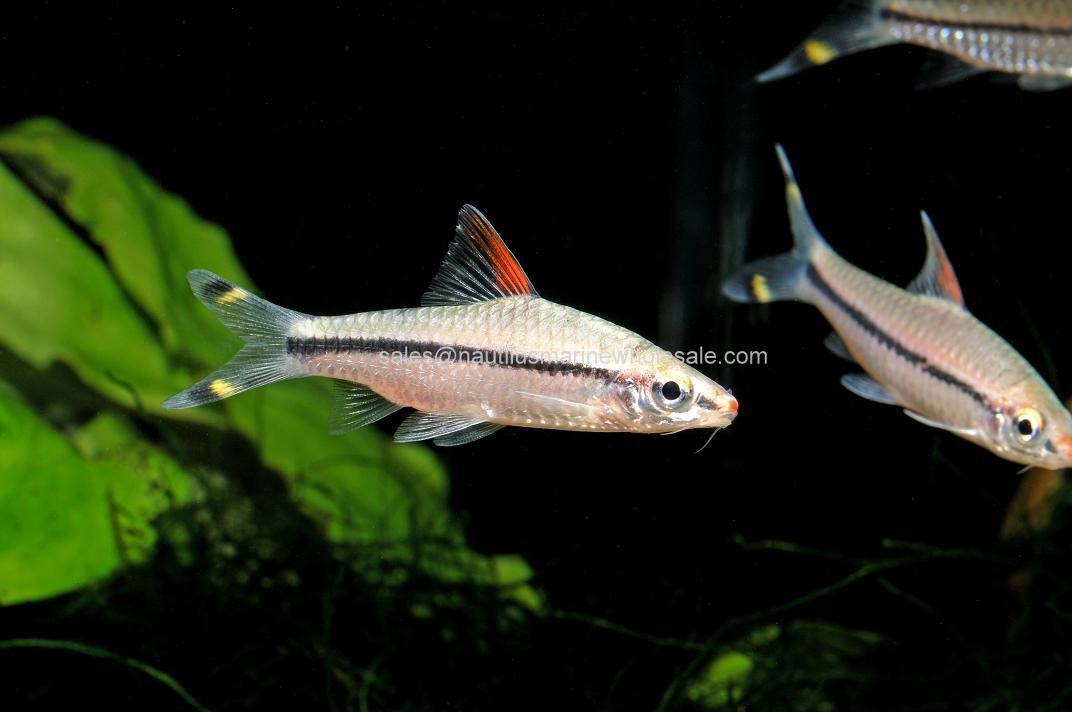 |
Roseline Shark | in stock | $19.99 | |
| 909 |  |
Albino Rainbow Shark | in stock | $4.99 | |
| 913 |  |
Tri Color Shark (Bala Shark) | in stock | $11.99 | |
| 9173 |  |
Ghost Shark | in stock | $5.99 | |
| 144 |  |
Serpae Tetra | in stock | $3.99 | |
| 974 |  |
Black Skirt Tetra | in stock | $3.99 | |
| 972 |  |
White Skirt Tetra | in stock | $3.99 | |
| 984 | 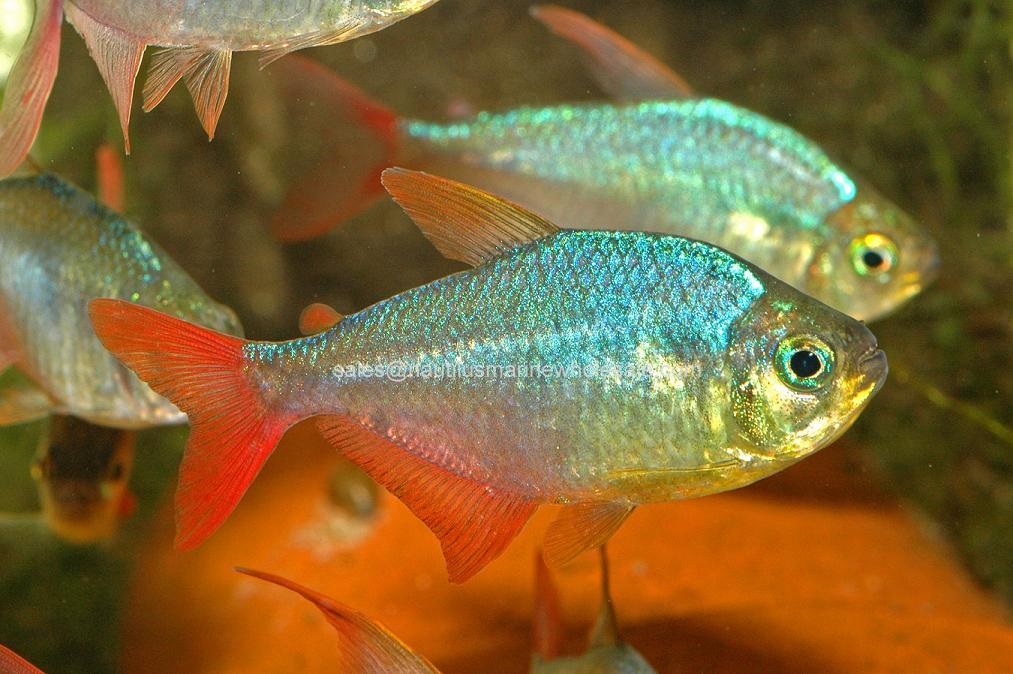 |
Red & Blue Colombian Tetra | out of stock | $2.99 | |
| 977 |  |
Black Phantom Tetra | in stock | $3.99 | |
| 995 |  |
Head & Tail Lite Tetra | in stock | $2.99 | |
| 823 | 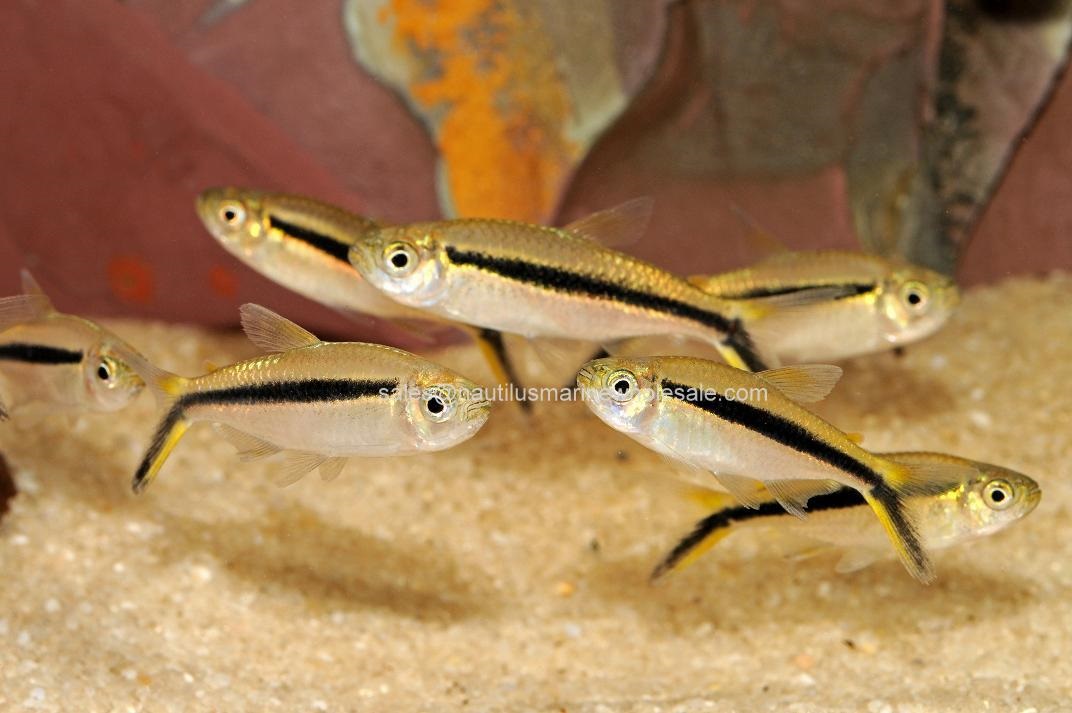 |
Penguin "Hockeystick" Tetra | in stock | $3.99 | |
| 5085 |  |
Black Emperor Tetra | out of stock | $4.99 | |
| 8544 | Rosy Tetra | out of stock | $3.99 | ||
| 4580 |  |
Orange Flame Von Rio Tetra | out of stock | $3.99 | |
| 149 |  |
Tiger Barb | in stock | $3.99 | |
| 141 |  |
Green Tiger Barb | in stock | $5.99 | |
| 5869 |  |
Electric Green Glo Barb | in stock | $13.99 | |
| 135 |  |
Black Ruby Barb | in stock | $3.99 | |
| 133 | 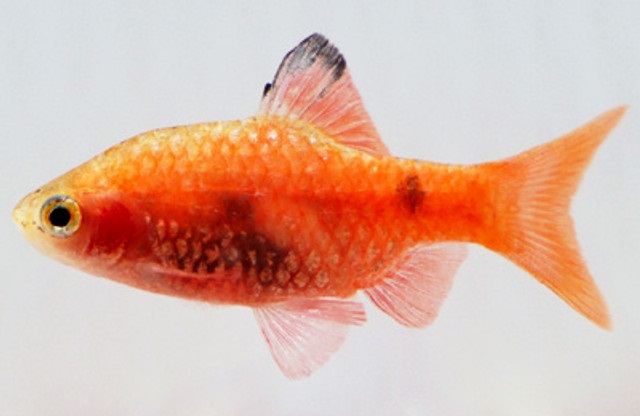 |
Red Glass Rosy Barb | in stock | $4.99 | |
| 150 | 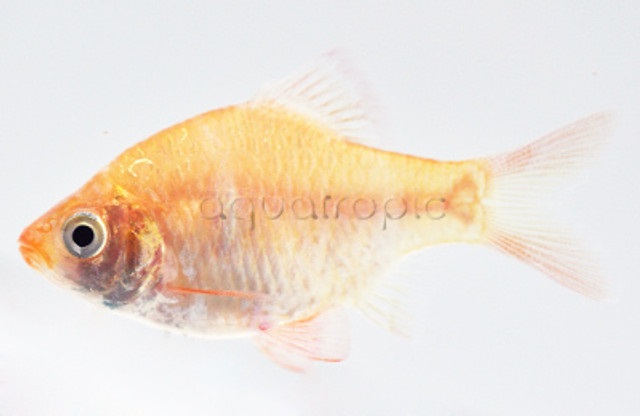 |
Albino Tiger Barb | in stock | $3.99 | |
| 143 | Odessa Barb | in stock | $4.99 | ||
| 151 |  |
Tinfoil Barb | in stock | $8.99 | |
| 1629 |  |
Platinum Green Tiger Barb | in stock | $12.99 | |
| 663 |  |
Pearl Gouramis | in stock | $6.99 | |
| 657 |  |
Gold Gouramis | out of stock | $8.99 | |
| 651 |  |
Blue Gouramis | out of stock | $9.99 | |
| 659 |  |
Kissing Gouramis | out of stock | $9.99 | |
| 251 |  |
Bristlenose Plecostomus Cat | in stock | $8.99 | |
| 1609 |  |
Albino Bristlenose Pleco Cat | in stock | $11.99 | |
| 248 |  |
Plecostomus Cat , small | out of stock | $4.99 |





